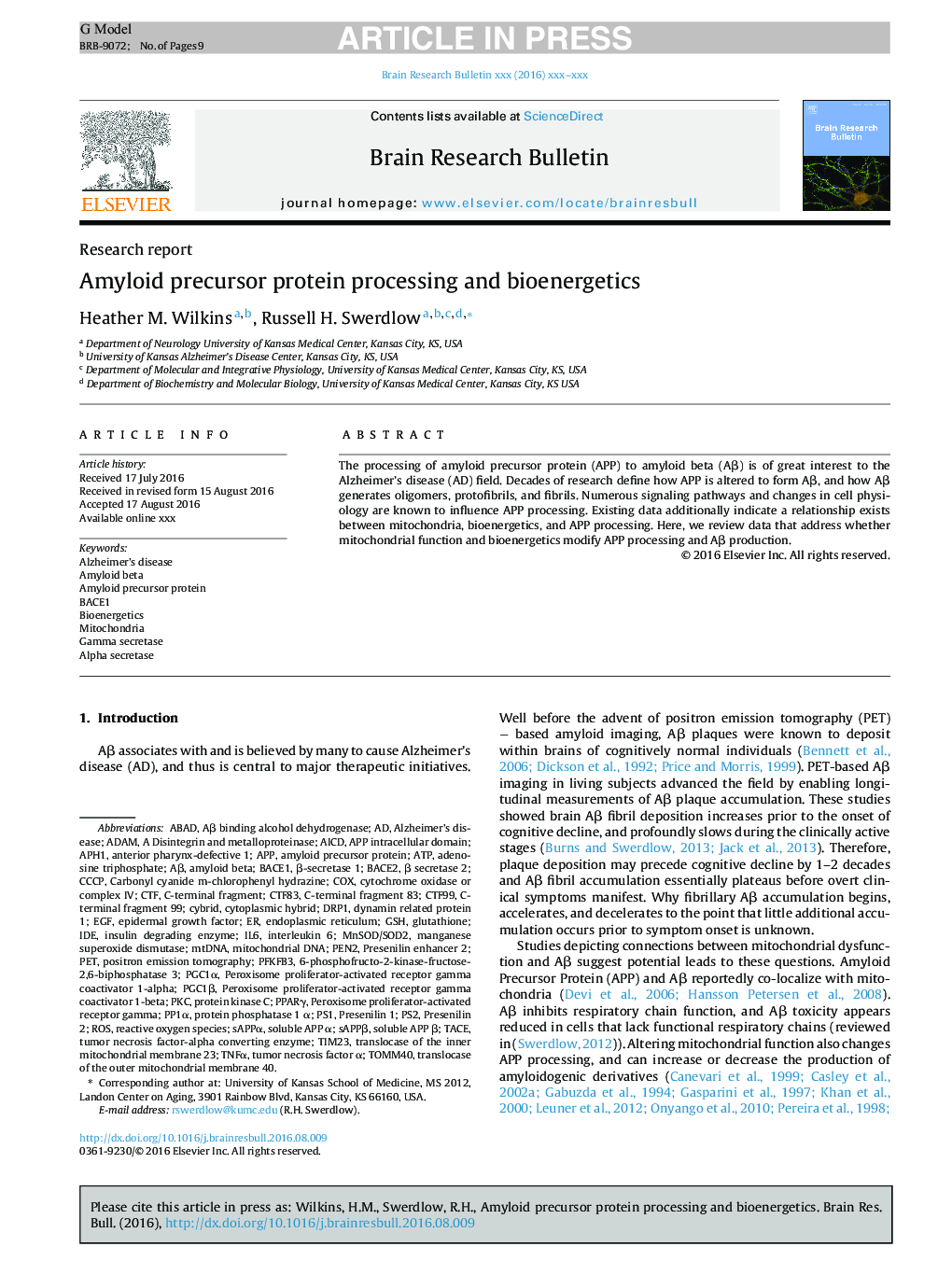| Article ID | Journal | Published Year | Pages | File Type |
|---|---|---|---|---|
| 5736200 | Brain Research Bulletin | 2017 | 9 Pages |
Abstract
The processing of amyloid precursor protein (APP) to amyloid beta (Aβ) is of great interest to the Alzheimer's disease (AD) field. Decades of research define how APP is altered to form Aβ, and how Aβ generates oligomers, protofibrils, and fibrils. Numerous signaling pathways and changes in cell physiology are known to influence APP processing. Existing data additionally indicate a relationship exists between mitochondria, bioenergetics, and APP processing. Here, we review data that address whether mitochondrial function and bioenergetics modify APP processing and Aβ production.
Keywords
GSHCCCPPKCDrp1CTFAICDPS2PS1sAPPβTACEAPPPPARγIL6PGC1αAβBACE1BACE2tumor necrosis factor-alpha converting enzymeEGFPEN2TNFαCOXAPH1Presenilin enhancer 2anterior pharynx-defective 1TIM23PFKFB3TOMM40β-secretase 1sAPPαperoxisome proliferator-activated receptor gamma coactivator 1-alphaMitochondrial DNApresenilin 1ROSADAMAdenosine TriphosphateATPinsulin degrading enzymeinterleukin 6IDEamyloid betaAlzheimer’s diseaseAlzheimer's diseasea disintegrin and metalloproteinasetumor necrosis factor αPositron emission tomographyAPP intracellular domainmtDNABioenergeticsmanganese superoxide dismutaseCybridendoplasmic reticulumepidermal growth factorABADC-terminal fragmentMitochondriaPETdynamin related protein 1amyloid precursor proteinProtein kinase CPresenilin 2carbonyl cyanide m-chlorophenyl hydrazineGamma secretasePeroxisome proliferator-activated receptor gammaGlutathioneReactive oxygen species
Related Topics
Life Sciences
Neuroscience
Cellular and Molecular Neuroscience
Authors
Heather M. Wilkins, Russell H. Swerdlow,
